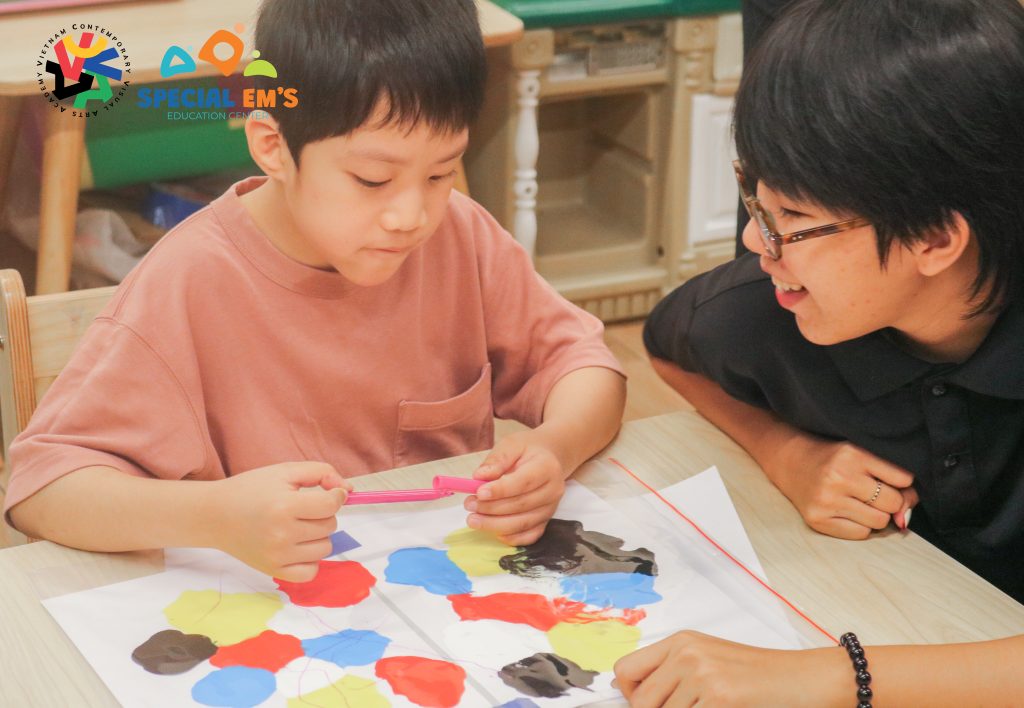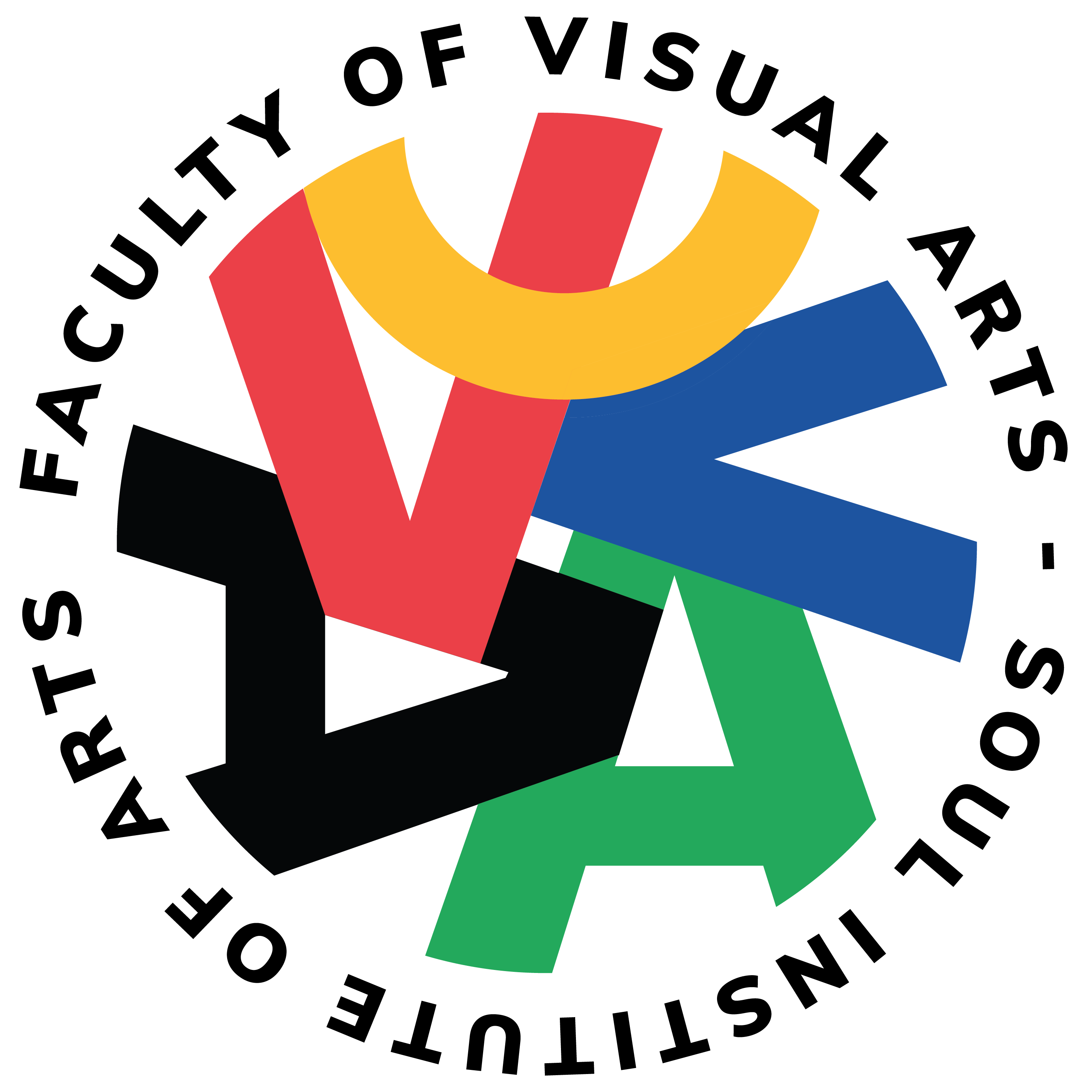8 OUTSTANDING BENEFITS OF PROVIDING CONTEMPORARY VISUAL ARTS ACCESS FOR CHILDREN WITH SPECIAL RIGHTS
CHILDREN WITH SPECIAL RIGHTS: WHO ARE THEY?
Children with special rights include those with autism spectrum disorder, attention deficit hyperactivity disorder (ADHD), intellectual disabilities, speech delays, emotional or behavioral disorders, and more. Unfortunately, many children with special rights are not identified early, and they lack specialized environments and communities tailored to their needs, leading to delayed intervention and support. This poses significant challenges to their overall development. Early identification and timely intervention are crucial to help these children integrate and thrive optimally.

The Benefits of Allowing Children with Special Rights to Access Visual Arts
Visual arts are not just a form of entertainment but also an effective educational and therapeutic method for children with special rights. Below are the significant benefits of exposing children to visual arts:
-
Developing Communication Skills
Contemporary visual arts help children express emotions and thoughts without needing words. They can use colors, images to convey what they want to share. Through this, children learn to convey ideas, emotions more naturally and effectively.
-
Improving Motor Skills
Activities like drawing, coloring, and collage help develop fine motor skills, supporting the control of small muscles in hands and fingers. These activities not only improve motor skills but also enhance hand-eye coordination, an important factor in children’s overall development.
-
Enhancing Creative Thinking and Problem-Solving
Through the creative process, children learn to think independently, seek new solutions, and solve problems encountered in creating artworks. Art encourages imagination and develops creative thinking skills, making children more flexible in solving life situations.
-
Boosting Confidence and Sense of Achievement
Completing an artwork gives children a sense of pride and achievement, essential for building self-esteem and confidence. Recognition and encouragement from parents, teachers, and peers also contribute to boosting children’s spirits and motivation.
-
Developing Focus and Patience
Art activities require concentration and patience, helping children train attention and perseverance. In the process of creating artworks, children learn to manage time and be patient with each small detail, which is beneficial for learning and daily activities.
-
Enhancing Social Skills and Teamwork
Participating in art classes helps children interact and collaborate with friends, developing teamwork skills and social communication. Children learn to share, listen, and work together to achieve common goals, creating a positive learning environment and bonding.
-
Supporting Emotional Development
Art is a tool for children to manage and express emotions, reduce stress and anxiety, and provide a sense of peace. Children can find relaxation and relief through creativity, thereby improving mood and mental health.
-
Encouraging Self-Expression and Self-Discovery
Art allows children to explore and express themselves naturally and without limitations. They can freely express thoughts, emotions, and personal views through artworks, thereby developing self-awareness and self-perception.
Contemporary Visual Arts Program for Children with Special Needs
The Vietnam Contemporary Visual Arts Academy (VCVAA) proudly introduces a Contemporary Visual Arts Program designed for children with special rights. This program is designed to help children develop motor skills, social-emotional skills, creative skills, and confidence through fun and beneficial visual arts activities.
Short-Term Program
- Age: 4 – 10 years old
- Duration: 3 months
- 30 minutes/session – 2 sessions/week
- Location: Special Em’s Education Center – 15 Tu Xuong, Vo Thi Sau, District 3, Ho Chi Minh City

Program Content
The Contemporary Visual Arts Program by VCVAA for children with special rights brings about many practical benefits:
✅ Bold and comfortable practice in a group setting: Children are encouraged to express themselves and interact with friends in a supportive and friendly environment.
✅ Development of fine and gross motor skills; social-emotional skills: Art activities help children improve motor skills and develop necessary social skills.
✅ Interaction with various new materials and experimenting with tools for shaping: Children experience and create with new materials and tools, sparking curiosity and interest.
✅ Increased interest and ability to focus on the process of playing with materials and creativity: Children learn to concentrate and be patient when participating in art activities.
✅ Using lines, shapes, colors to create artwork and share personal ideas: Children are encouraged to use imagination and creative skills to create unique artworks.
Parents and students can learn more about the ART VISUAL ARTS WORKSHOP SERIES FOR CHILDREN WITH SPECIAL RIGHTS – WORKSHOP #1 DECODING THE LANGUAGE OF CHILDREN here.




